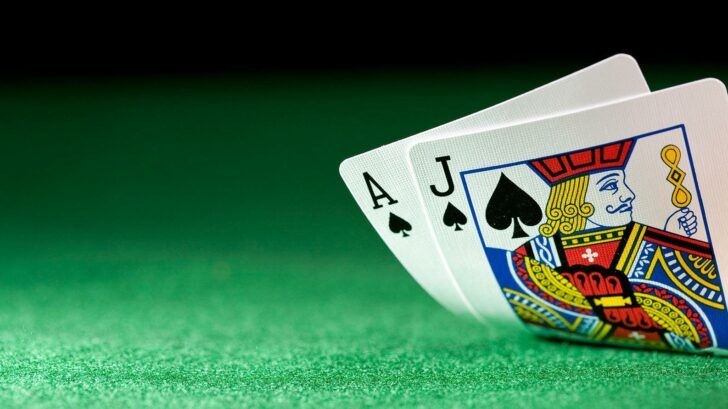So You Want to Win at Blackjack…

We take a look at the two main strategies employed by successful gamblers to give them an edge at the blackjack tables
Winning at blackjack is all about leveraging small advantages gained from strategy and exploiting those over time. There is no silver bullet, no quick fix, it’s time and dedication that makes winners at the blackjack table.
Now strategies come in a myriad of varieties. They range from the awfully simplistic to the so overly complex that you’d need a degree in quantum mathematics and a working understanding of chaos theory just to grasp them, let alone employ them.
The smart strategies are therefore ones that are of practicable use in real-life circumstance. There’s no point practicing a strategy you can’t replicate in the hot-house environment of a casino under the watchful eyes of dealer and pitboss.
Today we’ll take a brief glance at the two main varieties of strategy that are employed by a great many gamblers to avail themselves of the best chances possible at the tables. You’ve probably heard of them before, the first is card counting, the second, ace tracking.
Winning ways
We’ll start with card counting, probably one of the oldest blackjack tricks around and the one that all casinos are on the look out for. This revolves around the basic truth that high cards are advantageous to the player but disadvantageous to the house.
Thus if one can know how many high cards are still to come from the deck you could accurately judge periods during the game when they’re likely to fall in your favor and bet accordingly. This requires a good memory and mental arithmetic skills because it’s a tad more complex than it sounds.
First of all you have to assign different cards values, these are not as displayed on the card themselves, nor is it their value in the game per se, but a separate sequence. Cards two to six are worth +1, cards seven to nine are 0 and tens, picture cards and aces are all -1.
A count of K, 3, 9, 4, 10, 10, 2, 8, 5 would therefore be +1. Which is simple enough and not too taxing but unfortunately to get the “true count” you then have to divide the running count of the game by the number of half-decks left still to be dealt.
Now with six decks in a shoe that means you can find yourself dealing in some pretty serious fractions, no one enjoys dividing anything by 11, but generally that division will be unnecessary for you to spot when the time is ripe.
Counter intuitive
So with a true count of +1 what’s to be done? Bet 1% of your total bankroll that’s what. If the true count is +2, bet 2%, etc, etc. As a strategy this is an advantage not an act of magic and it’ll require time at the tables to get a return but it is a card counting system with a proven track record.
Casinos aren’t fond of people card counting. It’s not against US gambling laws, but casinos can deny service to people at will and guess what, they exercise that will as much on those counting cards as they do for drunks and vagrants.
People are usually noticed counting cards not because of their winnings, casinos expect lucky people, but because of the pattern of betting and the tell tale signs of someone using items on the table to keep count of the count. It’s best you are as unobtrusive as possible when using a card counting system.
The second of the two blackjack strategies requires more memory than math since you have to remember sequences of cards as they were dealt and, more importantly, how they were taken up after the hand by the dealer.
Dealing with it
Typically a dealer will, when a hand is done, very smoothly take up all the cards that were dealt in one motion that will slip each card under it’s neighbor. Ace tracking requires that the player remembers which two cards went under the ace when it was taken back.
• Two things to know about blackjack
• Better betting by design
• Choose one or lose loads
So now all you need do is await the reappearance of those two cards and you know an ace is close behind. In a game where being dealt an ace give you over a 50% advantage, knowing when they’re coming can be hugely advantageous.
Those unfamiliar with cards might mutter at this point about shuffling of cards but that tends not to distance cards from each other by as much as one might imagine and the advantage can still be gained by a player paying attention.
The best time to “bet for the ace” as it were is when the sequence falls at the end of a hand and cards are about to be dealt afresh. With casinos paying out odds for natural blackjacks it can be very lucrative.
Twice the fun
Of course neither one of these casino strategies is mutually exclusive but using both at once tends to be counter productive as a player gets swamped in a sea of contradictory mathematics trying to work out in their head what a computer would find taxing.
It is therefore best to take your pick and stick to it. Either go for the more rapid rewards of the more risky ace tracking or the slower but less hazardous route of card counting. Whichever you choose it’ll take practice, discipline, dedication and some subtlety to turn into winnings.
Good luck!




